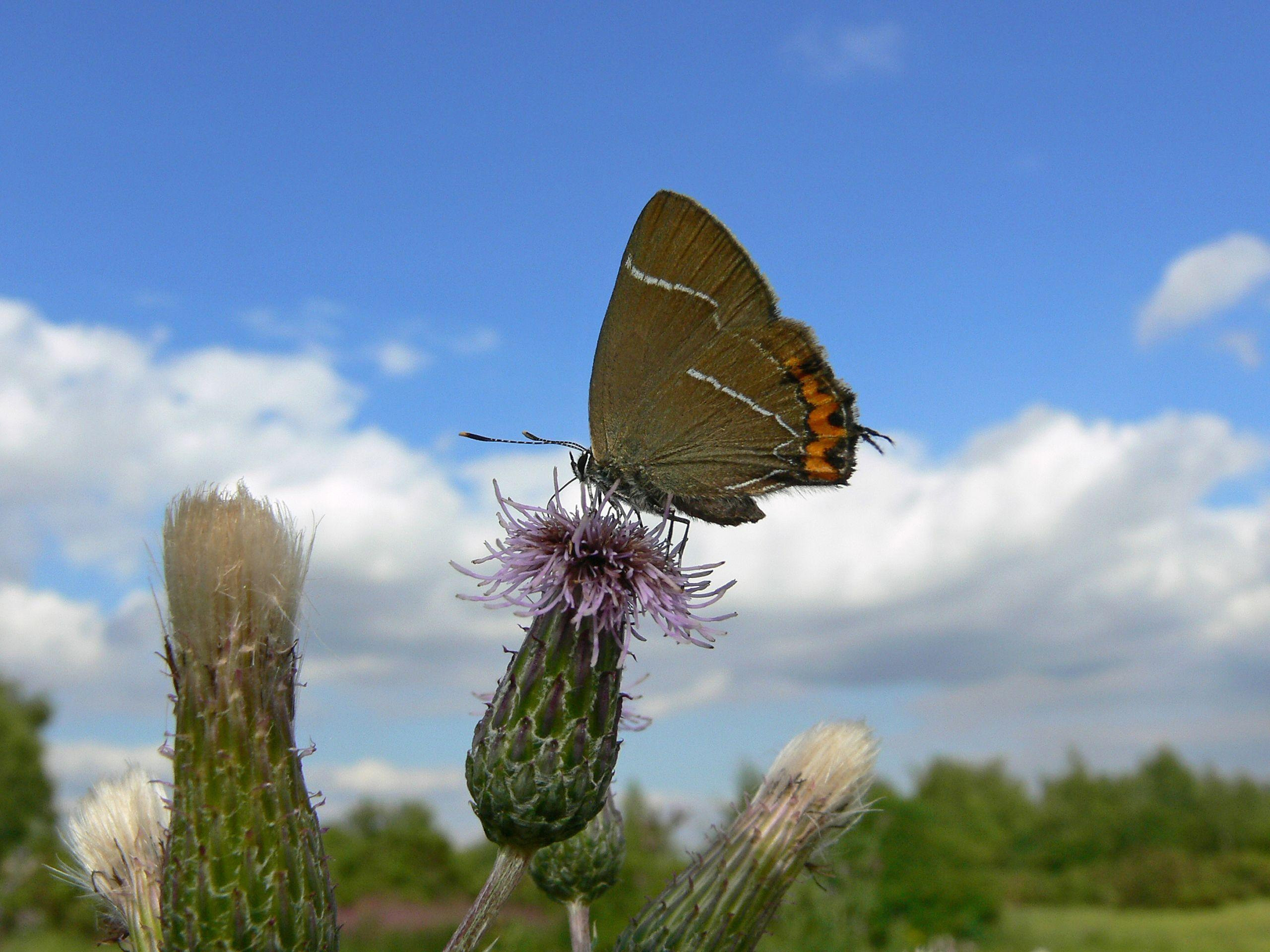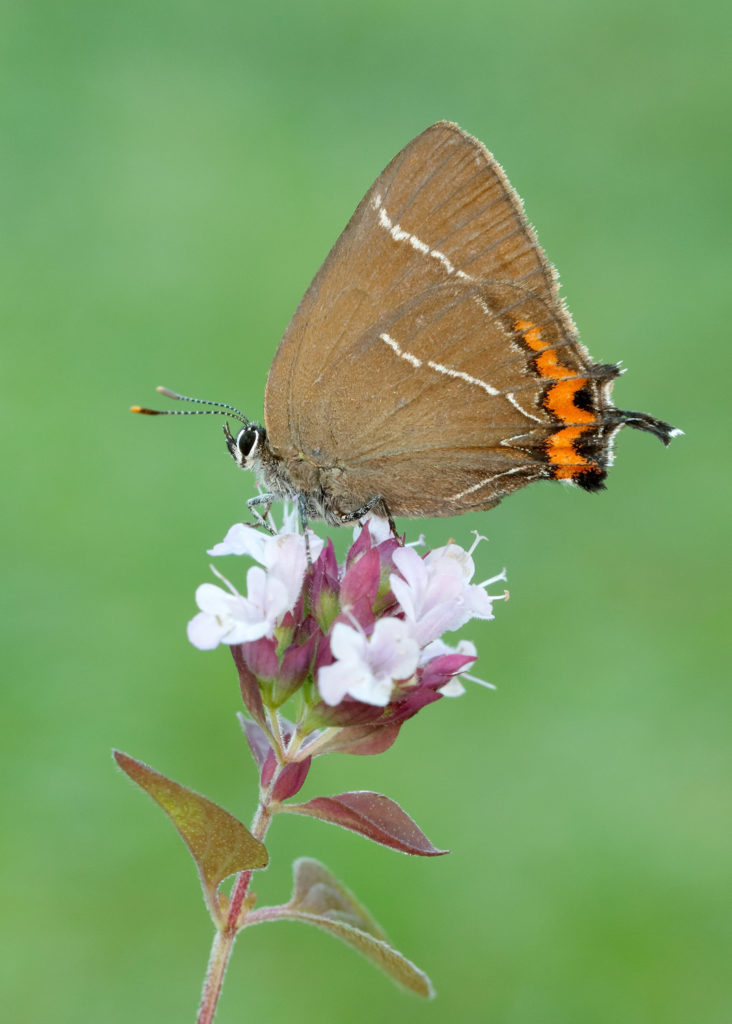
A butterfly whose numbers have seen dramatic declines in recent years is breeding in Scotland for the first time in 130 years, experts said.
The white-letter hairstreak butterfly, which has a distinctive W marking on the underside of its wing, is widespread in England and Wales, but has seen populations drop by almost three-quarters (72%) in the last decade.
The recent falls have come after major declines in the 1970s as a result of Dutch Elm disease, as the species’ caterpillars feed on elm.
For a decade, volunteers for wildlife charity Butterfly Conservation have been monitoring the species and its gradual spread northwards – thought to be the result of a warming climate.
Now a handful of eggs of the hairstreak have been found on wych Elm trees – a more resilient variety of elm – at Lennel, near Coldstream, Berwickshire, by amateur naturalists.
The discovery of eggs comes after a single adult white-letter hairstreak butterfly was seen around 10 miles further north last summer by Borders butterfly recorder Iain Cowe.
He said: “The discovery of these eggs is hugely significant as it not only confirms the white-letter hairstreak is breeding here, but one of the eggs was an old, hatched shell – so it looks like the butterfly could have been breeding here since at least 2016.
“Last year was an impossible find, but this year’s egg discovery is beyond anything we thought possible.”
Volunteer Ken Haydock, from Bolton, Greater Manchester, who made the discovery with Jill Mills, said: “It was a lovely sunny morning and we were searching the elm trees by the River Tweed at Lennel when Jill called me over.
“I could see by the look on her face that she had found something.
“We were both beaming with disbelief and delight when we realised what Jill had found and within seconds I was fumbling in my pack for the camera – my hands were shaking.”
They had been asked to check the elm trees in the surrounding area and along the River Tweed following last year’s sighting of the butterfly.
Before the discovery, the most northern location for white-letter hairstreak eggs was at Rothbury in Northumberland, about an hour south of Paxton.
Director of Butterfly Conservation Scotland Paul Kirkland said: “We will need to have a few more years of confirmed sightings before we can officially class this butterfly as a resident species in Scotland.
“If this happens, it would take the total number of butterflies found in Scotland to 34, which really would be something to celebrate.”

Enjoy the convenience of having The Sunday Post delivered as a digital ePaper straight to your smartphone, tablet or computer.
Subscribe for only £5.49 a month and enjoy all the benefits of the printed paper as a digital replica.
Subscribe